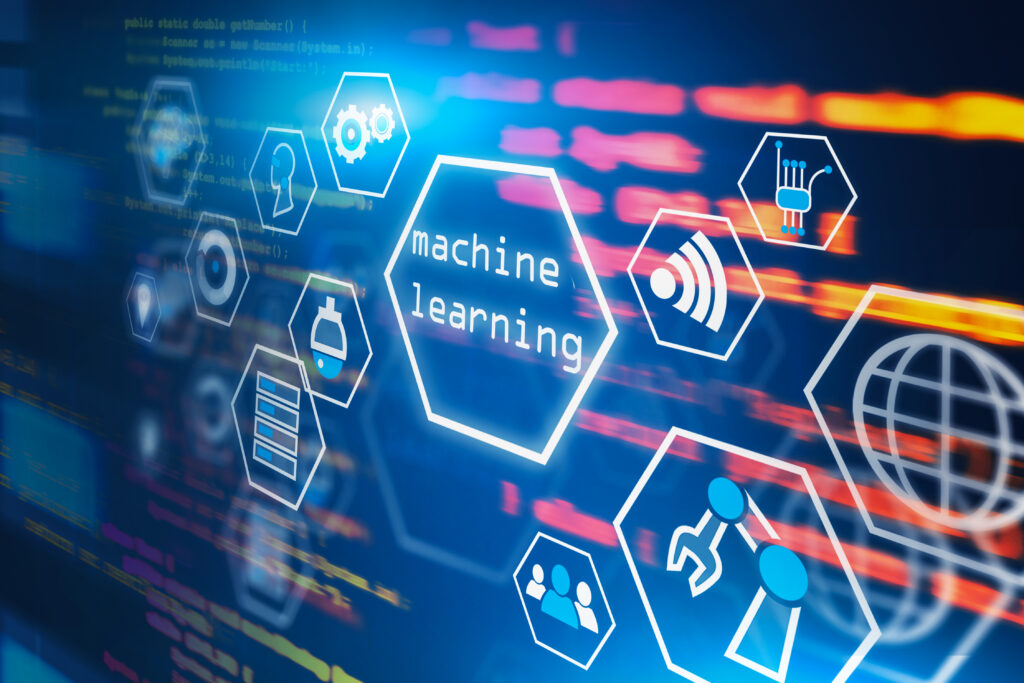As a technology professional, when training AI models, you will know the growing concerns around data privacy and centralization. Federated learning offers an innovative solution, enabling models to be trained and decentralized across devices while keeping data local. This protects privacy and reduces reliance on centralized data. In this article, we explore the federated learning approach – how it works, its benefits, and how it is set to revolutionize data privacy and AI. With companies like Google successfully using federated learning, it is a technique you need to understand. We guide you through the key concepts and provide real-world examples of how federated learning is applied to overcome modern AI challenges. Continue reading for an in-depth look at this critical emerging technology.
Federated Learning: A Paradigm Shift for Privacy
i. Decentralized Training
Federated learning allows AI models to be trained across multiple decentralized devices, ensuring privacy by keeping data on-device and reducing centralization. Instead of aggregating data in one place, federated learning brings the algorithms to the data. Models are trained on-device, and the parameters are aggregated to improve the shared model.
ii. Privacy Preservation
With federated learning, sensitive data remains on-device and is not shared with any central server. Only model parameters, not raw data, are exchanged to update the shared model. This approach protects user privacy while still enabling powerful machine learning. Federated learning is a game changer for companies and organizations handling sensitive data.
iii. Reduced Data Transfer
Federated learning significantly reduces the amount of data transferred between devices and servers. Only model parameters, which are many orders of magnitude smaller than raw data, need to be communicated. This makes federated learning feasible even when bandwidth and connectivity are limited. It also reduces power consumption compared to transferring large amounts of data.
iv. Challenges and Use Cases
Federated learning does present some technical challenges, like ensuring consistency between decentralized models and dealing with non-iid data. However, it has many promising use cases, including predictive keyboard and speech recognition systems, health monitoring using wearable devices, and bank fraud detection systems. Federated learning enables all of these use cases while respecting user privacy. Overall, federated learning represents a paradigm shift that will shape the future of privacy-preserving AI.
How Federated Learning Works to Protect Data Privacy
Decentralized Model Training
Federated learning allows AI models to be trained across multiple decentralized devices, like smartphones, ensuring data privacy and reducing data centralization. Instead of aggregating data in one place, federated learning brings the code to the data. AI algorithms are sent to individual devices where they train on the local data stored on that device.
Model Parameters Shared, Not Data
The locally trained models share summary updates, called model parameters, with a central server. These model parameters are combined to improve the shared model. However, the raw training data remains on the individual devices and is never shared with others. This allows companies to build AI models that leverage massive datasets while protecting users’ privacy.
Differential Privacy for Added Protection
Some federated learning systems also apply differential privacy, which adds mathematical “noise” to the model updates to prevent the central server from identifying updates from any single device. This provides an extra layer of privacy protection for users. Companies like Google, Apple, and others are actively developing federated learning systems that apply differential privacy.
Federated learning is an exciting new development that could enable considerable improvements in AI while upholding data privacy principles. As data becomes more decentralized and privacy concerns grow, federated learning offers a promising path forward for AI that respects users and protects their most sensitive information. With widespread adoption, federated learning could revolutionize how data is used to build AI models in a responsible and trustworthy way.
Real-World Applications of Federated Learning
Healthcare
- Federated learning shows immense promise in healthcare, where privacy concerns around sensitive patient data are paramount. Models can be trained on patient data distributed across hospitals and clinics without that data ever leaving local systems. For example, federated learning is used to build AI models to predict the onset of sepsis, a life-threatening condition, by analyzing patient vital signs and electronic health records.
Autonomous Vehicles
- Autonomous vehicles generate vast amounts of data from sensors, cameras, and navigation systems. Federated learning allows self-driving cars from different manufacturers to collaborate and build shared models for object detection, path planning, and more without pooling their data in one central repository. Each vehicle downloads the shared model and then continues training it locally using its own data.
Smart Devices
- Many smart devices in homes and businesses constantly sense and collect data but often go unused. Federated learning provides a way to use that data while preserving privacy. For example, smart thermostats in different homes could collaborate to build an energy-efficient temperature and humidity control model without sharing the data from any individual thermostat. The locally trained models are then averaged together into an aggregate model that is shared with each device.
Federated learning is poised to unlock the potential of distributed data and push the boundaries of AI in an ethical, responsible way. By keeping data decentralized and private, federated learning alleviates security and privacy risks associated with data centralization. At the same time, it allows organizations to build robust AI models that continue improving over time through collaborative training across many locations. The future is federated!
Challenges and Limitations of Federated Learning Approaches

Federated learning allows AI models to be trained across multiple decentralized devices while ensuring data privacy. However, there are several challenges and limitations to consider with federated learning methods.
1. Limited Data Availability
Federated learning relies on data distributed across many devices. This can limit the amount of data available to train complex machine-learning models that require enormous datasets. The model may not achieve optimal accuracy or performance without access to more substantial data.
2. Communication Constraints
The federated learning model is trained on-device, so devices must communicate model updates between each other. This can be challenging or even impossible in some scenarios where devices have limited connectivity. Without consistent communication between devices, the model training process may be inefficient or stall completely.
3. Resource Limitations
Federated learning also relies on the computational resources of each participating device. Less powerful devices may struggle to train a complex model, limiting the capabilities of the federated learning system. The training process can also drain battery and bandwidth on devices, which may discourage participation from some users.
4. Maintaining Privacy
While federated learning aims to keep data decentralized and private, privacy leaks or inadvertent data sharing is still risky. Care must be taken to ensure that no sensitive or personally identifiable information is transmitted between devices during the model training process. Robust privacy-preserving techniques should be implemented to safeguard data.
Federated learning is a promising technique for building AI models without centralized data, but researchers and practitioners must consider these challenges and limitations. Continued progress in communication, privacy-preserving algorithms, and on-device computing will help address these issues and expand the possibilities of federated learning in the future. With prudent development, federated learning can achieve its goal of revolutionizing data privacy and AI.
The Future of Federated Learning: Revolutionising Data Privacy and AI
Enhancing Privacy Through Decentralization
- Federated learning allows AI models to be trained across multiple decentralized devices, ensuring privacy by reducing data centralization. Rather than aggregating data in one location, federated learning distributes the training process across many devices. Each device trains the model on its local data; only model updates are aggregated at a central server. This protects users’ sensitive data and gives more control over how personal information is used.
Democratizing AI Development
- Federated learning also makes AI more accessible by enabling organizations without massive datasets to develop AI. The distributed nature of federated learning means that models can be trained on many devices, even when each device only has a small local dataset. This allows smaller organizations to build AI without needing access to massive centralized datasets.
Continual Learning at the Edge
- Federated learning is well suited for continual learning, where models are regularly retrained on new data to account for evolving environments and data distributions. Because federated learning systems are already designed to aggregate model updates from many devices, the latest data from edge devices can be seamlessly incorporated into model retraining. This will enable AI systems, especially those deployed on edge devices, to stay up-to-date with the latest data and continue improving.
Overall, federated learning is poised to transform AI by enhancing privacy, democratizing AI development, and enabling continual learning at the edge. By distributing the training of machine learning models across many decentralized edge devices, federated learning will allow AI to become more data-efficient, privacy-focused, and adaptable to change. The future is bright for this revolutionary approach to AI.
What’s The Verdict?
Federated learning represents a paradigm shift in how AI models can be trained while prioritizing data privacy and security. By enabling decentralized on-device training and only aggregating model updates, sensitive user data remains private. The benefits of this approach extend beyond privacy to reduce the costs and biases of centralized data. With large tech companies already implementing federated learning in their products, it is clear this technology will only continue to expand. Consider the potential of federated learning as you develop your AI applications and services. Embracing this distributed approach can future-proof your models against data privacy regulations while unlocking the wisdom of crowds.
More Stories
Google’s AI Edge App Brings Offline Intelligence to Your Phone
The new AI Edge App from Google reshapes mobile technology as it brings artificial intelligence directly to your smartphone.
Salesforce Accelerates AI-Driven Cloud Data Integration with Informatica Acquisition
Salesforce acquires Informatica in a deal valued at around $8 billion as part of a bold move to redefine its approach to cloud data management.
Amazon’s Bold $150 Billion Drive to Expand AI-Powered Data Centers
Amazon has embarked on an audacious journey, committing a staggering $150 billion over the next 15 years to expand its AI-powered data centers worldwide.
KT Cloud Accelerates Digital Growth with New High-Tech Data Center in Yecheon-Gun
KT Cloud new data center in Yecheon-gun marks a key public-private effort with Gyeongsangbuk-do and Yecheon County.
Microsoft Cloud Momentum Fuels AI Growth Across Indonesia and Malaysia
Microsoft Cloud services expands strategically into Indonesia and Malaysia to reshape Southeast Asia’s technological landscape.
Roblox Farming Craze Fuels Surging App Store Economy
As you dive into the dynamic world of digital economies, one phenomenon stands out: the Roblox farming craze. This surge,...


